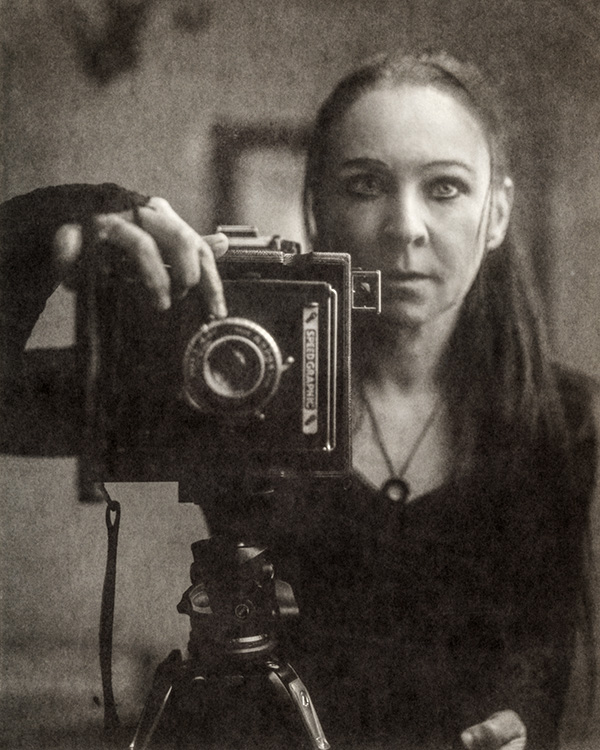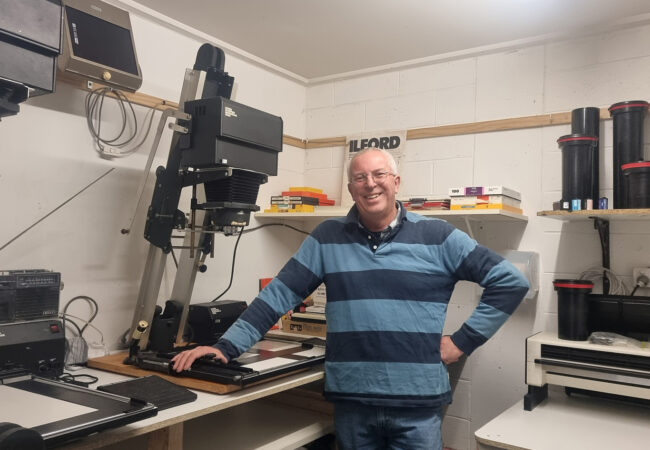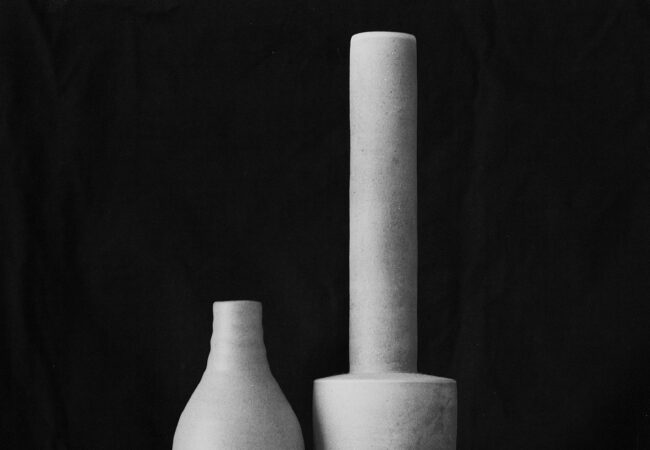
The Photograph Considered number ten – Anjella Roessler
Grief. Paper negative
The portrait “Grief” was created in collaboration with an artist friend, Andrew Delaney, who deals in visceral and often quite dark subject matter which resonates with much of my imagery. We had talked about making a portrait together but had never found time to make it happen. Less than a week after the death of his father, he contacted me to tell me the time felt right, and he wanted us to create a portrait that captured his grief. I felt honoured that he would entrust me with something like this at such a painful time of his life.
His character and much of his work deals with times long ago so I decided that large format and paper negative would give the result that I had in mind. Neither of us knew exactly what state he would be in when doing the portrait, but I felt that even if he could not hold completely still for the long exposure we would get something interesting.
I had used my 1945 4 x 5 Speed Graphic with its 135mm f4.7 lens previously for a portrait test and had been very impressed with the look it gave to the image, so I decided that this camera and lens combination would also suit this portrait. My film holders were loaded with darkroom paper cut to size and rated at ISO 6. Unfortunately, it was quite an overcast day and in the light of Andrew’s studio I was getting shutter speeds of 2 seconds at f4.7, however he held his pose amazingly well and we had no problems getting the shot.
I chose paper negative as it’s a media that I’m using quite prolifically lately. I love the textures that I can get, and I love that every image is a source of wonder and discovery. I was trained in photography in the 1990’s, and I learnt to process and print both colour and black and white films, so for me, film photography is something I am very comfortable with. I know the results I will get, and I know my images will be accurate. With paper negative, everything is unknown and exciting, and I’ve discovered that I enjoy this not knowing and sense of surprise. I can be relatively confident enough that I’ll get something useable, however, light responds differently, people’s skin can respond in unusual ways, and the development can change the way an image will look. It becomes a real art form.
Back in the darkroom, my paper developer is mixed at half the normal ratio. I flash the paper briefly under my enlarger as this helps to cut down contrast and give more tonal quality. I don’t time development, though I try to keep it under 1 minute so that no dark blacks form and texture from incomplete development is evident. Too long development and it loses the qualities that I find special in it. Stop bath, fixing and washing are as normal and then the negatives are dried and scanned into my computer. I’d like to experiment with darkroom printing them, but as yet have not found a 4 x 5 enlarger for sale in my area (if anyone has one let me know!)
I scan the images quite large at 16-bit, and then spot them for the ever-present dust and cat hair – I have three cats and they seem to shed specifically in my scanner! I’m very careful not to erase the texture from the paper or development while doing this. After retouching, I dodge and burn the image as I would in the darkroom. I have not completed a final print as of this writing, however it will be inkjet printed, most likely on a fibre-based paper to replicate a vintage print.
The first photograph I took was of my sister when I was about 8 years old. From then on, I was hooked. I photographed friends throughout high-school and after graduation went on to study at PSC for 3 years. I’ve had a studio, photographed portraits and weddings, done commercial work including architecture and food, but after a health setback I decided to give it all up and go back to study, so I’m now completing my Honours in photography at Deakin University and am learning and playing and rediscovering my creativity. I’m planning on completing my masters next year, and after that…who knows. I don’t but I know I’ll have fun exploring the possibilities!
More of Anjella Roessler’s work can be seen on her website.
 Anjella Roessler self portrait
Anjella Roessler self portrait




Congratulations Anjella, two beautiful portraits.
Such a powerful portrait
Thank you 🙂 I love that you can see so much of the emotion in his eyes.
Yes, it’s a ripper. Fascinating how the eyes full of wetness rendered so well and carry the grief that we can all relate to.